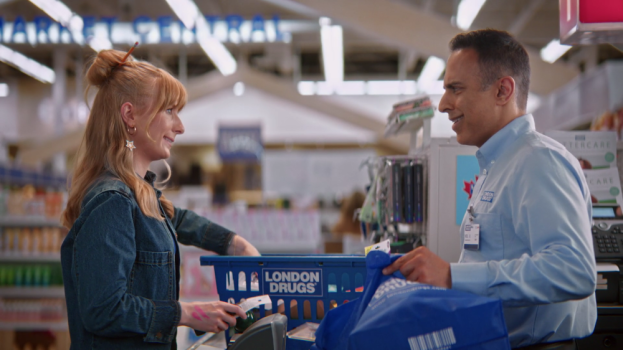
This tax season will be different for H&R Block Canada and its customers.
With the economic factors brought on by COVID-19, the federal government announced in March that the individual filing date for the 2019 tax year will be June 1, with the payment date pushed to Sept. 1. Physical distancing protocols have also disrupted the traditional process of Canadians having in-person consultations with their tax experts and accountants.
So, in its latest campaign, H&R Block is highlighting “safe and easy” ways to file this tax season. The 15-second spot, created by Sid Lee, uses animation to showcase its quarantine-appropriate filing options: uploading tax documents from home and allowing an H&R Block tax expert to handle them remotely; doing it yourself using the company’s tax software; or, dropping your tax documents off at an H&R Block office.
[iframe_vimeo video = “410655201”]
According to Hilary Zaharko, VP of marketing at H&R Block Canada, the strategy for this campaign comes from a place of wanting people to feel comfortable filing their taxes with an expert in a non-traditional way, emphasizing that it is still safe, quick and easy. Due to the fact that the majority of H&R Block’s business is largely still an in-person type of business, Zaharko says the company wanted to show that its alternative options were just as safe and trustworthy – both when it comes to public health matters and concerns that are typical when it comes to personal finances.
“This seemed to be the fastest way to convey that with safe and easy ways to file…you can still work with a tax expert,” Zaharko says.
H&R Block Canada has previously allowed customers to upload their tax documents via the company’s secure portal. Zaharko says this service “wasn’t a huge part” of H&R Block Canada’s business, but was something it was planning to build towards in the next couple of years, as working with clients virtually was going to become more prominent. “I would say that when COVID-19 hit, we needed really quick and easy ways to serve our clients safely and make our associates safe as well,” Zaharko tells strategy.
The first move towards this came on Mar. 20, when the company moved to a drop-off only model for its bricks-and-mortar offices, where a tax expert will prepare the return without the customer having to wait. For digital offerings, Zaharko says the company began to re-tool their backend system, which increased the capacity of their network of virtual H&R Block tax professionals.
“Instead of having 30 tax pros being able to do your taxes virtually for you, we have 1,100 or 1,200 people trained on how to do your taxes like that,” Zaharko says. She adds that the company will probably have at least “a couple thousand” tax professionals trained to do taxes, virtually, by the end of this week.
Though the brand is mostly looking to help customers navigate a changing tax environment, one challenge H&R Block has faced, Zaharko notes, is that it had bought a lot of out-of-home advertising for its original tax season campaign, but “nobody is really on transit or driving” at this time. They’ve deferred the OOH ads until May, before the extended filing deadline but when there is the possibility of more people being outside due to social distancing guidelines being relaxed.
H&R Block is looking to attract new clients with this campaign – around 29 years old, who make under $80,000 per year. This is who has typically made up H&R Block’s new clients, Zaharko says; potential client research suggests this is the target most interested in the brand and that age 29 is the year of “big change for people,” such as getting married or having a first child.























